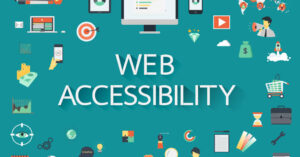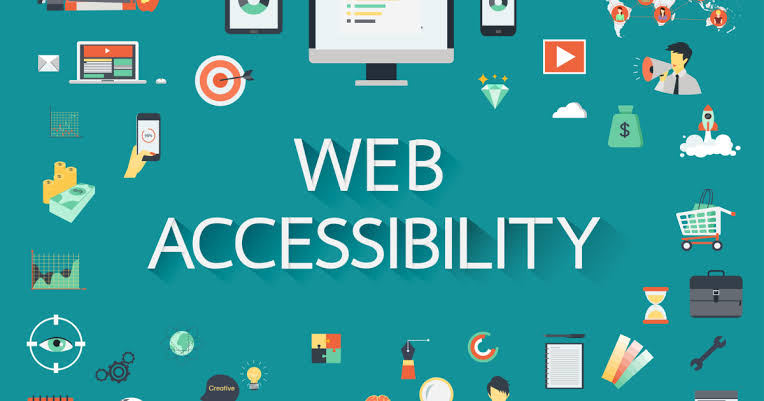Table of Contents
In the vast digital world of online mobile applications, accessibility is becoming a necessity. As developers, QA experts, designers, and product managers, we create user-friendly digital environments for everybody. The 21st century, sometimes called the digital era, is upon us. For any and every organisation, websites and mobile applications are essential digital resources and channels to reach customers.
We know that many of your tech-savvy consumers are using the portals or applications provided by your business. However, there is another aspect of this conversation about which stringent federal regulations apply. We are speaking about accessibility, which calls for a web accessibility testing service provider for your company.
Accessibility is more than simply a checkbox for online and mobile app development; it has strategic business benefits. Millions of individuals who rely on assistive devices may use products by making them accessible. This inclusive approach enhances brand image while fostering consumer loyalty and trust. Socially, accessibility testing promotes equality on the internet by providing equal opportunities for all users, irrespective of ability, to enjoy positive online experiences.
What is Web Accessibility Testing?
An application testing method for evaluating websites, applications, and digital experiences for inclusion and usability is web accessibility testing. Ensuring users with disabilities, especially those who need assistive devices like screen readers, can access and utilise the programme is the goal of accessibility testing. Organisations may improve user experiences and adhere to international standards for website accessibility by implementing online accessibility testing procedures.
To find possible hindrances users encounter, accessibility testing procedures might combine automated technologies with manual testing methods. An application company should ideally use various strategies to guarantee efficient website accessibility testing on a large scale. Automated testing can identify typical accessibility problems such as hyperlinks that are not descriptive, incomplete picture alternative text (“alt”), and missing form labels. Quality engineers or developers can evaluate text readability and colour contrasts through manual testing.
Why Should You Care About Web Accessibility?
Is it surprising to learn that an estimated 1 billion individuals worldwide suffer from a handicap of some kind? Performing daily tasks can be highly challenging for many persons with impairments. Thankfully, the internet’s introduction and its plethora of websites and applications make it easier for people with impairments to do their jobs. On the other hand, if applications and websites are inaccessible, they are only contributing to the issue rather than solving it.
When a website is accessible, it fosters an inclusive atmosphere where all users have equal access to features and information.
The benefits of having an accessible website include the following:
- Broadens your audience reach
- Enhanced user experience
- Builds positive PR
- Boosts your SEO
- Protects you against accessibility lawsuits
Web Accessibility Standards to Follow
The global norm for web accessibility is known as the WCAG (Web Content Accessibility Guidelines). When creating an accessible website, the WCAG advises concentrating on four key ideas. POUR is an abbreviation that makes it easy to remember:
Perceivable(P)
Make your website’s material accessible to users based on their informational preferences. Stated differently, avoid concentrating just on one sense and ensure that several senses recognise or interpret your material.
Make sure people with vision impairments can view images on your website, for instance, by including appropriate alt text so their screen readers can announce the picture description.
Operable(O)
Verify that every user has access to and can utilise every feature or control on your website. Make sure, for instance, that visitors can access the controls for playing, pausing, and stopping videos on your website using a keyboard and a mouse.
Understandable(U)
Keep it simple: visitors should be able to grasp the information on your website with ease. Additionally, ensure that all of the interface components’ functions are simple for people to learn. For instance, it might be challenging for visitors unfamiliar with your website’s jargon to understand the information if there is too much of it.
Robust(R)
Since people with disabilities use assistive technologies (AT) to access websites, the content of your website should be accessible with AT as well. One AT-specific optimisation, for instance, will prevent visitors with a different type of AT from accessing your website.
Types of Accessibility Testing and Review
You may instantly enhance certain parts of your website’s accessibility by running automated accessibility tests, but this won’t help you comply with WCAG or lower the possibility of future legal action. Testing for comprehensive accessibility necessitates a multi-layered strategy to access every resource in your digital environment. Organisations must utilise these four accessibilities testing types to maintain ADA compliance and ensure accessibility for users of all abilities:
1. Automated Testing
Automated testing using accessibility testing tools is an excellent place to start since it may swiftly pinpoint the easiest fixes to enhance accessibility. However, as automated testing lacks human interpretation and is prone to missing essential accessibility concerns, it might not be sufficient to stop lawsuits or assist users of all abilities.
2. Manual Code Review
A manual evaluation is necessary for 80% of the WCAG 2.0 standards and 100% of the most recent WCAG 2.1 success criteria. To verify that the HTML, CSS, and Javascript adhere to WCAG, this testing involves actual persons with WCAG technical review expertise and knowledge.
3. User Experience (UX) Review
Examining more substantial site design components is necessary for UX evaluation to ensure accessibility and usability. Among the components examined in a UX evaluation are:
- Visual structure
- Logical page layout
- Menu functionality
- Button size
This procedure benefits those with low eyesight, limited movement, and cognitive disabilities and is especially crucial for native apps.
4. User Testing
User testing allows actual individuals with genuine disabilities—like those who regularly use screen reader technology—to verify that your site is usable for them. At the same time, human code review ensures that your site complies with WCAG.
5. Manual Testing
- Ensure that keyboard navigation is an option for accessing and using any interactive features.
- Test your website using widely used screen readers like JAWS, NVDA, or Voiceover to ensure the material is readable and understandable.
- Ensure enough contrast between the background and text colours to make reading easier.
- Ensure that forms contain clear instructions and informative labels.
- Verify that Elements can only utilise permitted ARIA attributes.
- Ensure that each value of the id attribute used in ARIA and labels is unique.
- When using multimedia components, include transcripts and captions.
Final Thoughts
Not only is web accessibility testing required by law, but it is also essential to building an inclusive online community. Accessing your website benefits all visitors and contributes to a more equitable and inclusive online environment. With the right accessibility testing tools and the testing procedure described in this tutorial, you can significantly improve the accessibility of your website and make it a more welcoming place for a larger and more varied audience. It’s critical to remember that sustaining a fully inclusive online presence requires constant testing and refinement and that accessibility is a continual commitment.
For More Information Please Visit These Websites Viprow And Vecteezy


